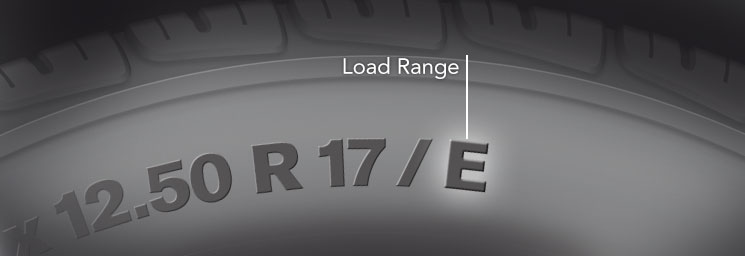The Tire Load Index and Load Range are terms related to the load-carrying capacity of a tire. The Tire Load Index is an assigned numerical value that indicates how much weight a tire can support when properly inflated. It ranges from 0 to 279, with higher numbers representing stronger tires able to carry more weight.
On the other hand, the Tire Load Range is used by manufacturers to indicate different levels of load-bearing capability for each tire size or type. These typically range from A (lowest) through D (highest). For example, a D-range tire would be able to handle more weight than an A-range tire in the same size and type.
Both ratings must be considered when selecting tires as they both affect their overall carrying capacity and performance.
When talking about tires, two of the most important terms to understand are load index and load range. The tire load index is a numerical code which indicates the maximum weight that a single tire can support when fully inflated. Load range, on the other hand, refers to how stiff or durable a tire is based on its construction type.
Knowing both of these values will help you choose the right tires for your vehicle and ensure they’re up to safety standards in terms of their ability to handle certain weights.

Credit: tirepressure.com
What is the Difference between Load Range And Load Index?
Load range and load index are two different measurements used to determine the weight capacity of a tire. The load range is an indication of how much weight the tire can safely carry when it is inflated to its maximum recommended pressure, while the load index measures how much weight a tire can support at its rated inflation pressure. The higher the number associated with each measurement, the higher the carrying capacity.
For example, if a tire has a load range of “C” and a corresponding load index of 106, that means it’s rated for 1,874 pounds at its maximum inflation pressure.
What Load Index is 10 Ply?
The load index of a 10 ply tire is between 90 and 97. This indicates that the tire has a maximum load capacity of 1,433 kg (3,164 lbs) to 1,653 kg (3,648 lbs). The higher the load index number on a tire, the greater its maximum weight-carrying capacity will be.
It’s important to check your vehicle’s owner manual to ensure you choose tires with an appropriate load rating for your specific model.
What Does 120 Load Index Mean on Tires?
The load index is a numerical code on the sidewall of your tire that indicates its maximum load-carrying capacity. The higher the number, the greater the weight it can support. A 120 load index means that your tire has an ability to carry up to 1,764 pounds at its maximum air pressure rating.
It’s important to pay attention to this number because if you exceed this weight limit, there could be catastrophic results like tire failure or blowouts. Therefore, when selecting tires for your vehicle, always check that they have a high enough load index and corresponding recommended inflation pressure in order to handle whatever loads you plan on carrying with them.
What is Load Index Or Load Rating of Tires?
Load Index or Load Rating of tires is the numerical value assigned to a tire size that indicates its maximum load carrying capacity. This number can range from 0 (lowest) to 279 (highest). The higher the load index, the greater the weight it can safely carry.
For example, if you have a tire with an 87 rating, this means it will be able to hold 1,205 pounds at maximum inflation pressure. It is important to note that tires should not be overloaded beyond their rated limit as this could lead to catastrophic failure and cause serious safety issues for drivers and other road users alike.
Tire Load Rating: The Unsung Hero of Tire Safety
Conclusion
In conclusion, understanding the difference between tire load index and load range is important when selecting tires for your vehicle. Tire Load Index is a numerical code that corresponds to the maximum weight capacity of an individual tire; whereas, Load Range indicates the amount of air pressure needed to achieve the corresponding maximum safe weight capacity. It’s essential to consult with your local technician or auto parts store in order to ensure you are choosing tires with appropriate load indexes and ranges for your specific make and model of vehicle.

